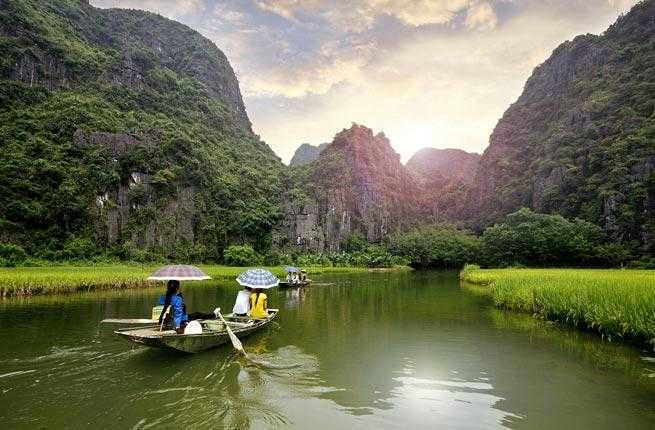
IGUACU FALLS
Where: Brazil and Argentina
At 490 feet wide and nearly 3000 feet long,Iguaçu Falls is filled with falls of every size and intensity, most notably Devil's Throat, where water drops from a height of 270 feet. With the highest flow of water on record, Iguaçu easily topples its equally famous sisters, Victoria and Niagara Falls. Ample viewing opportunities are available: Argentina offers close-up action shots with walkways that lead visitors into the the action—feeling the power of the water is unforgettable. Brazil features all-encompassing panoramas and sweeping vistas of the falls' network, allowing you to appreciate their sheer size.
Insider Tip: Paraguay is often overlooked, but the destination affords decent glimpses of the falls.
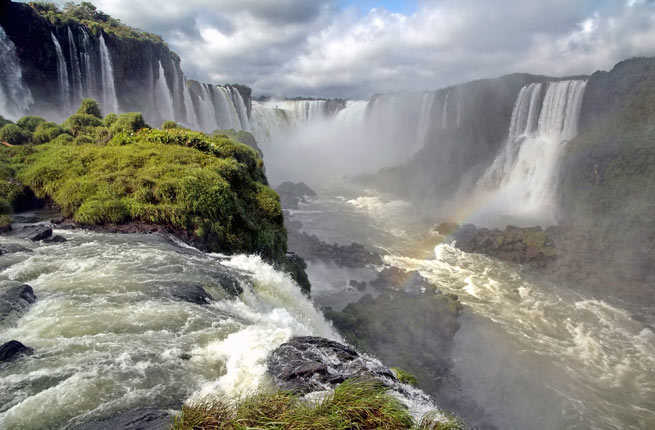
GALAPAGOS ISLANDS
Where: Off the coast of Ecuador
A utopian universe of 19 volcanic islands comprise the Galápagos archipelago, roughly 1,000 kilometers off the coast of Ecuador, in the Pacific Ocean. Watch your step on islandsIsabela and Fernandina, where endemic marine iguanas are protected and thriving in triple figures, each reaching up to five and a half feet long. Swim with sea lions, sharks, and giant turtles—all playful and curious, having never faced threats from humans. No wonder Charles Darwin found inspiration inGalápagos for his Theory of Evolution.
Insider Tip: Eco-friendly cruises are the best way to manuver islands with guides, treks, hikes, snorkeling, and on-board food and accommodations.
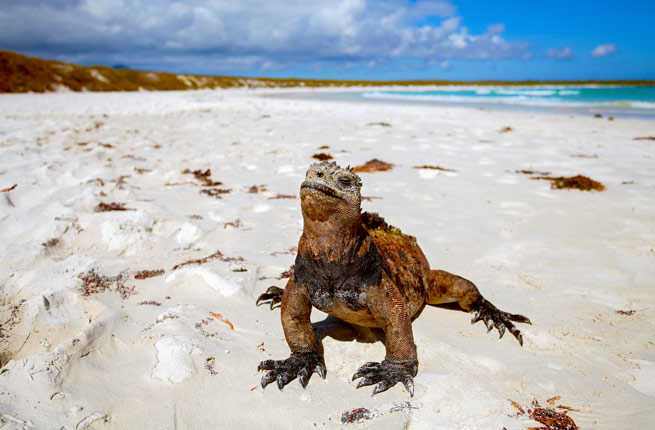
ROCK ISLANDS SOUTHERN LAGOON
Where: Republic of Palau
The term "picturesque" must have been coined with Palau in mind. The 200-kilometer chain of islands forms the archipelago, geographically part of Micronesia. Out of eight islands and 250 islets, Palau’s limestone Rock Islands jut out as if positioned on pedestals. Erosion has transformed them into towering umbrella shapes, bases fringed by fronds, reefs, coral walls, caves, and planes and ships—the remnants of World War II. With pristine waters, visibility reaches almost 200 feet below the surface. Inhabited for over 4,000 years, the islands are home to ancient burial grounds and drawings.
Insider Tip: Flights land in Guam, the gateway to Micronesia. Short connections get you to the islands.
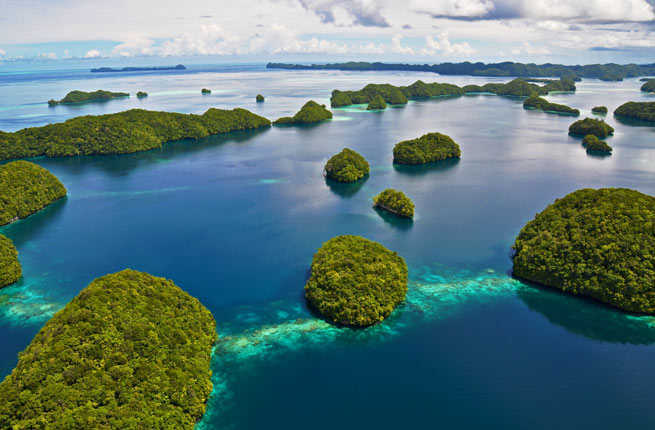
HALONG BAY
Where: Vietnam
This iconic group of evolving stone islands casts different shapes and colors, depending on the light and time of day, onto the emerald waters of the Gulf of Tonkin. The oldest is 280 million years old. Around half of the 2,000-odd limestone and schist islands are named after the shapes they project, such as Hon Rong ("Dragon Islet"). Halong Baycomprises the southwest islands, where eagles soar around forested peaks. Natural grottoes and caves punctuate the intricate and elaborate mesh of islands.
Insider Tip: Take a tour that involves sleeping on a boat in the bay. Visitors are always wowed by the mysticism and sheer scale of the rock islands by night.
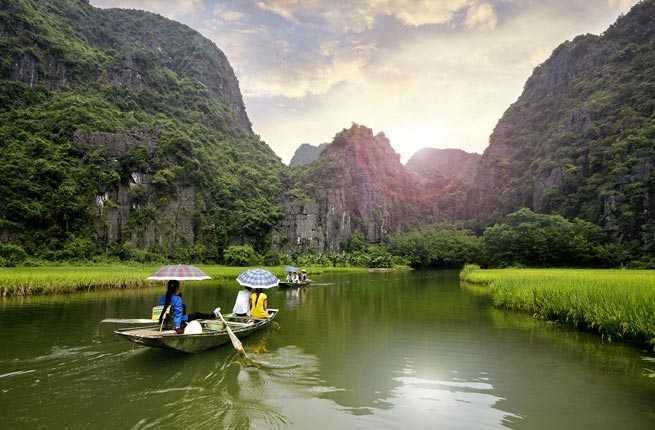
BOROBUDUR TEMPLE COMPOUNDS
Where: East Java, Indonesia
Mysticism shrouds dawn in Borobudur. Giant faded pink bell structures cap a giant stupa, representing the micro cosmos, and shimmer through a misty golden sunrise. It’s an ethereal scene that radiates ancient spirituality. The world’s largest Buddhist monument, dated to the 9th century, can be found here. One million tourists pour intoBorobudur’s grounds annually to marvel at the balustrades, relief panels, and Buddha statues. The stonework features an interlocking design—an architectural feat for its time.
Insider Tip: Face Borobudur in a replica building at the luxurious Amanjiwo resort. Breakfast is arranged on a secluded hilltop overlooking the temple.
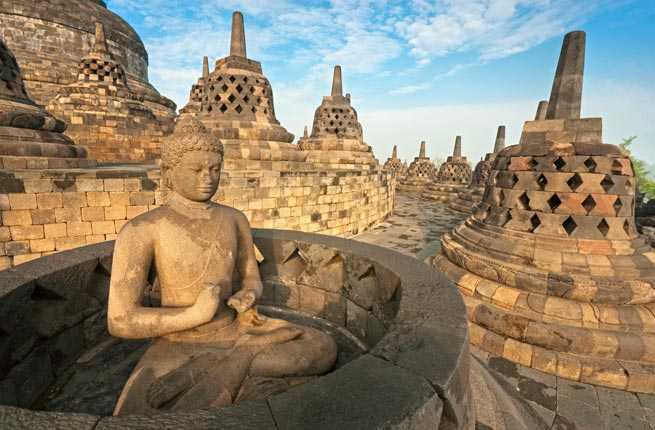
LOWER VALLEY OF THE OMO
Where: Ethiopia
One of the most striking places on Earth, South Ethiopia’s Omo Valley encompasses the unique peoples and landscapes of Africa’s Great Rift Valley, which can be seen from the moon. Meet the Hamer tribe, defined by their flame-red, braided hair; or the Mursi tribespeople, recognizable by their lip-plates. Around 200,000 people live in the Lower Omo Valley; they are widely considered the last bastions of African heritage.
Insider Tip: Unpaved dirt tracks and little infrastructure pose challenging terrain. Hire a Jeep and a guide in the country's capital,Addis Ababa.
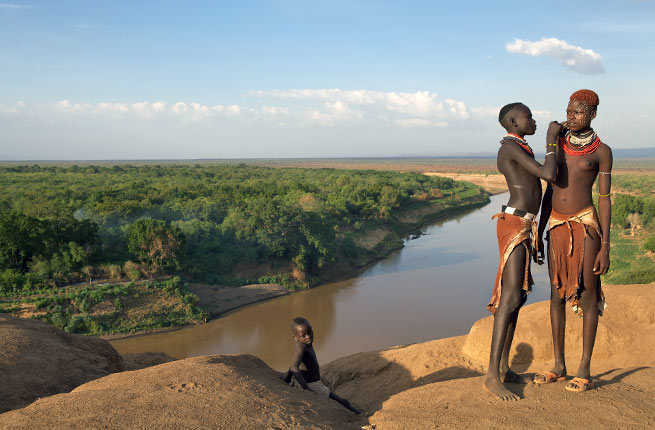
NAMIB SAND SEA
Where: Namibia
More than 7000 acres of coastal, foggy desert trace the arid South Atlantic coastline. Vast, shifting, red-sand dunes, some of the world’s highest, are interspersed with ephemeral lakes and 900-year-old camel thorn trees. The Namib Sand Sea comprises some of the biggest conservation areas inAfrica, with ancient cultures speaking the most complex languages. Night skies are star-encrusted fairy tales. Visitors describe it as a land of outstanding natural beauty, while environmentalists remain stunned by its delicately evolving ecology and geology.
Insider Tip: Climb ruthless "Big Daddy" dune for ultimate bragging rights, and board down for the most unique thrill.
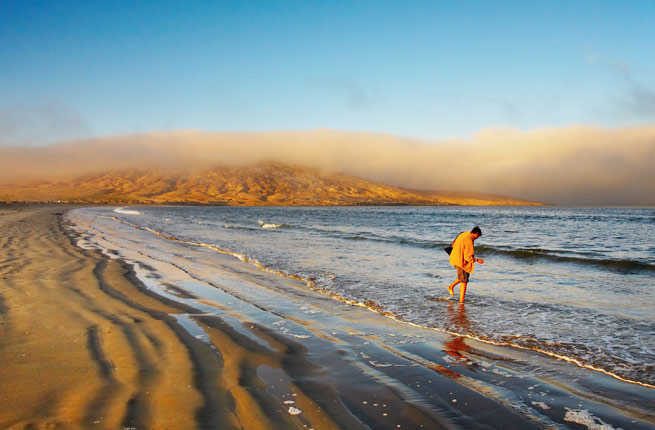
THINGVELLIR NATIONAL PARK
Where: Iceland
Þingvellir National Park (or Thingvellir) is a protected national shrine for Icelanders. It’s the most important cultural heritage site in the country, as the site of the General Assembly for 850 years, and dates back to 930 AD. History, nature, and spectacular scenery converge in breathtaking beauty throughoutÞingvellir, which can be visited as part of the famous "Golden Circle" tour. Divers can plumb the depths of Silfra, a submerged rift amidst pristine drinking water (yes, drinking!). Or simply soak in the pools that are a hotbed of geothermal activity.
Insider Tip: Nature and hiking trails are flanked by camping grounds along the River Öxará, so overnighting is welcomed.
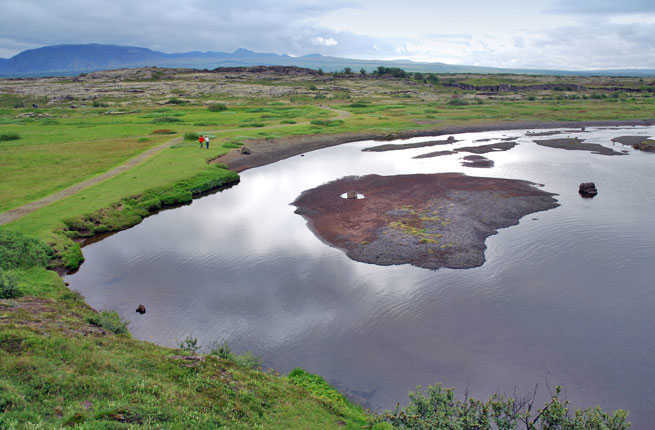
METEORA
Where: Greece
Precariously perched atop pinnacles of sandstone, 1300 feet high, Meteora’s six Greek Orthodox monasteries tower over the city of Kalambaka in central Greece. They’re centuries old—dating to the 9th century—from a time when Byzantine hermit monks, who lived in Meteora’s caves, were forced to move to safety at these heights.
Insider Tip: Be prepared for challenging vertical hikes and observe a strict covered dress code inside.
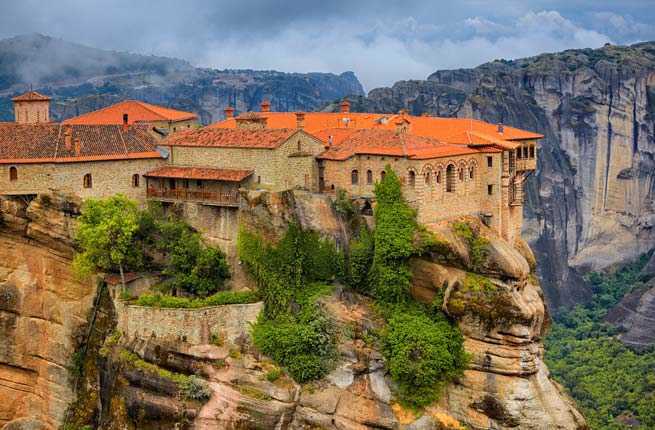
CINQUE TERRE
Where: Italy
Serrated mountains host olive groves and lush terraced vineyards, nestling five vivid villages that are carved into the coastline. Each is crammed with a distinctive ambiance, connected by wildflowers and butterflies, steeples, and a confectionary of colorful buildings. The cliffs of Cinque Terreseemingly slip into the sea—a protected marine area. Villages are reached solely by train, through a series of tunnels along sheer cliffs.
Insider Tip: Enjoy this food-lovers' haven by sampling local basil, garlic, and pine nuts in the sensational pesto, accompanied by fresh fish drenched in local lemons and Cinque Terre dry white wine from the vineyards.
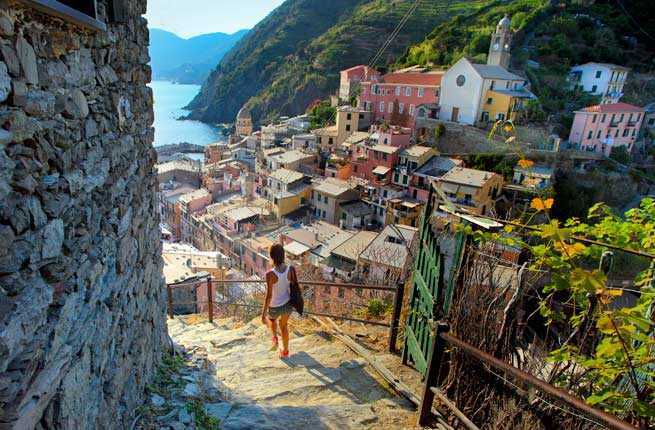
PETRA
Where: Jordan
The seventh wonder of the world is an astonishing prehistoric maze, riddled with sandstone caves, cliffs, and canyons. Rising from the desert, the whimsical "Lost City," is among the world’s most famous archaeological sites. The ancient Nabataeans carved the sprawling city out of stone over 2,000 years ago. 85 percent of Petra is yet to be unearthed. Strategically positioned, Petra was once a passageway of trade between the Arabian Peninsula, China, India, and Europe.
Insider Tip: Enter the city at first light through the "Siq," a tunnel with 80-meter walls. Climb 1,000 steps to the monastery for dizzying views that extend to Israel.
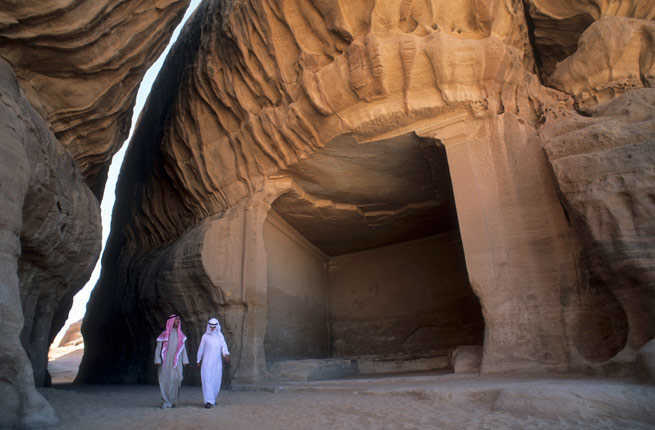
UVS NUUR BASIN
Where: Mongolia
Bound entirely by mountains, the Uvs Nuur Basin sits on the northern fringes of the Central Asian steppes. A wildlife and birdlife sanctuary, the basin spans 12 protected areas, represent major biomes of eastern Eurasia. Its ecology is applauded, comprising desert, mountains, tundra, and glaciers—all in relatively untrammelled area. The desert is home to marbled polecats while the mountains shelter the globally endangered snow leopard and Asiatic Ibex. Temperature extremes range from the lowest in winter at 72 degrees Fahrenheit to summer highs of 104.
Insider Tip: Explore the rich cultural heritage of 2,900 sites, seen through the burial mounds and stone tablets from the Paleolithic Age.
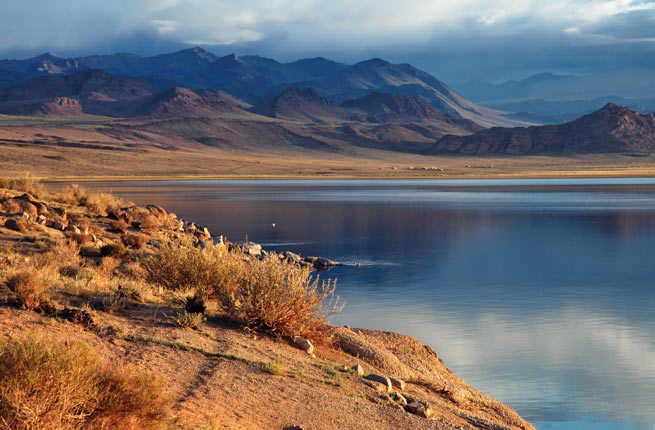
OGASAWARA ISLANDS
Where: Japan
To imagine the Ogasawara Islands—also called the "Bonin Islands"—think emerald waters and brilliant white beaches from the Caribbean, only in Japan. These 30 tropical and subtropical islands are scattered within the Pacific Ocean, 1,000 kilometers from Tokyo. The islands have never been attached to a continent, so the endemic animals and plants have undergone a deep evolutionary process unique to Ogasawara, earning it the affectionate nickname "Galápagos of the Orient."
Insider Tips: Don’t miss Minamijima, the most scenic spot featuring shimmering turquoise lagoons. Kominato Beach boasts exotic and remote cream-sand beach with a striking limestone rock formation.
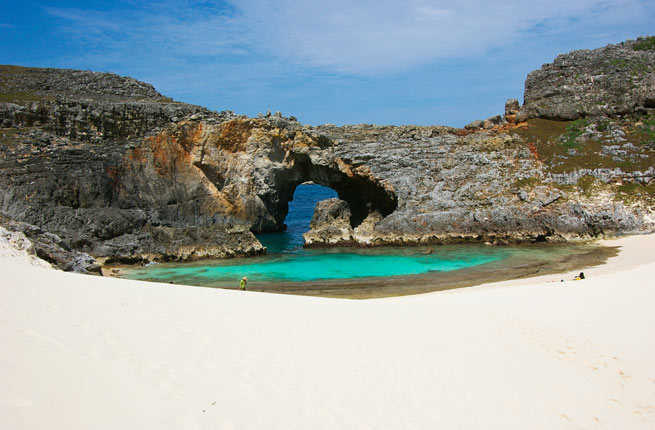
SARYARKA, STEPPE AND LAKES OF NORTHERN KAZAKHSTAN
Where: Kazakhstan
More than a million acres lie in two protected areas: Naurzum State Nature Reserve and Korgalzhyn State Nature Reserve, comprising wetlands of outstanding importance to migratory water birds. They stop in transit, en route from Africa, Europe, and South Asia to breeding grounds in Siberia. The steppe ofSaryarka is a shelter for more than half the region’s flora and the endangered saiga antelope. Lakes satiate the lands on a watershed between northern rivers and the southern Aral-Irtysh basin.
Insider Tip: Birdwatchers should keep a keen eye, as this is one of few places on the planet to spot the extremely rare Siberian white crane, Dalmatian pelican, and Pallas’s fish-eagle.
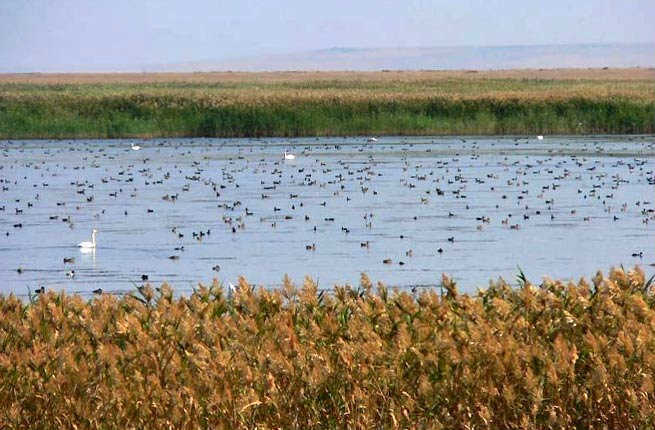
SINHARAJA FOREST RESERVE
Where: Sri Lanka
Sri Lanka’s final frontier of forest is a narrow strip of undulating terrain dotted with soaring ridges and disappearing valleys. Sinharaja is an innate feature of the country, etched into folklore and legend. The primary tropical rainforest is home to rare and endemic trees (more than 60 percent), and more than half the country’s native species of mammals and butterflies. Threat comes from encroaching rubber and tea plantations, for which demand is high, as it remains from logging.
Insider Tip: Meet local people from the 22 villages burrowed within the forest to observe their way of life.
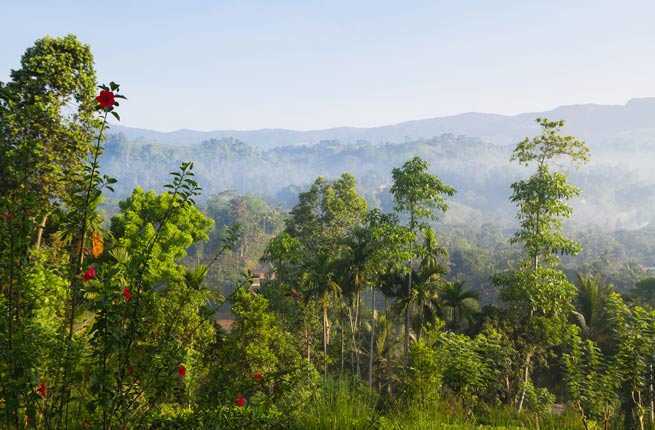
沒有留言:
張貼留言